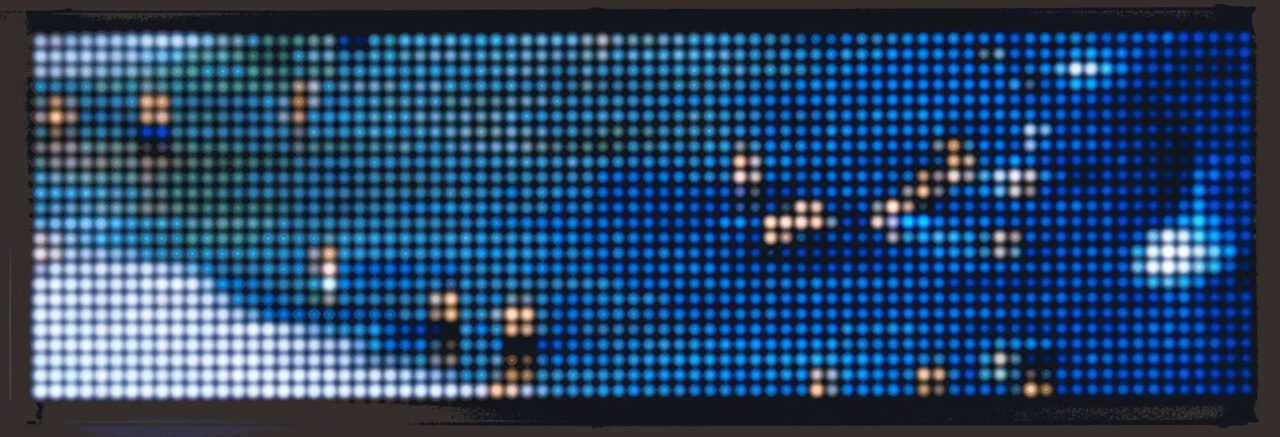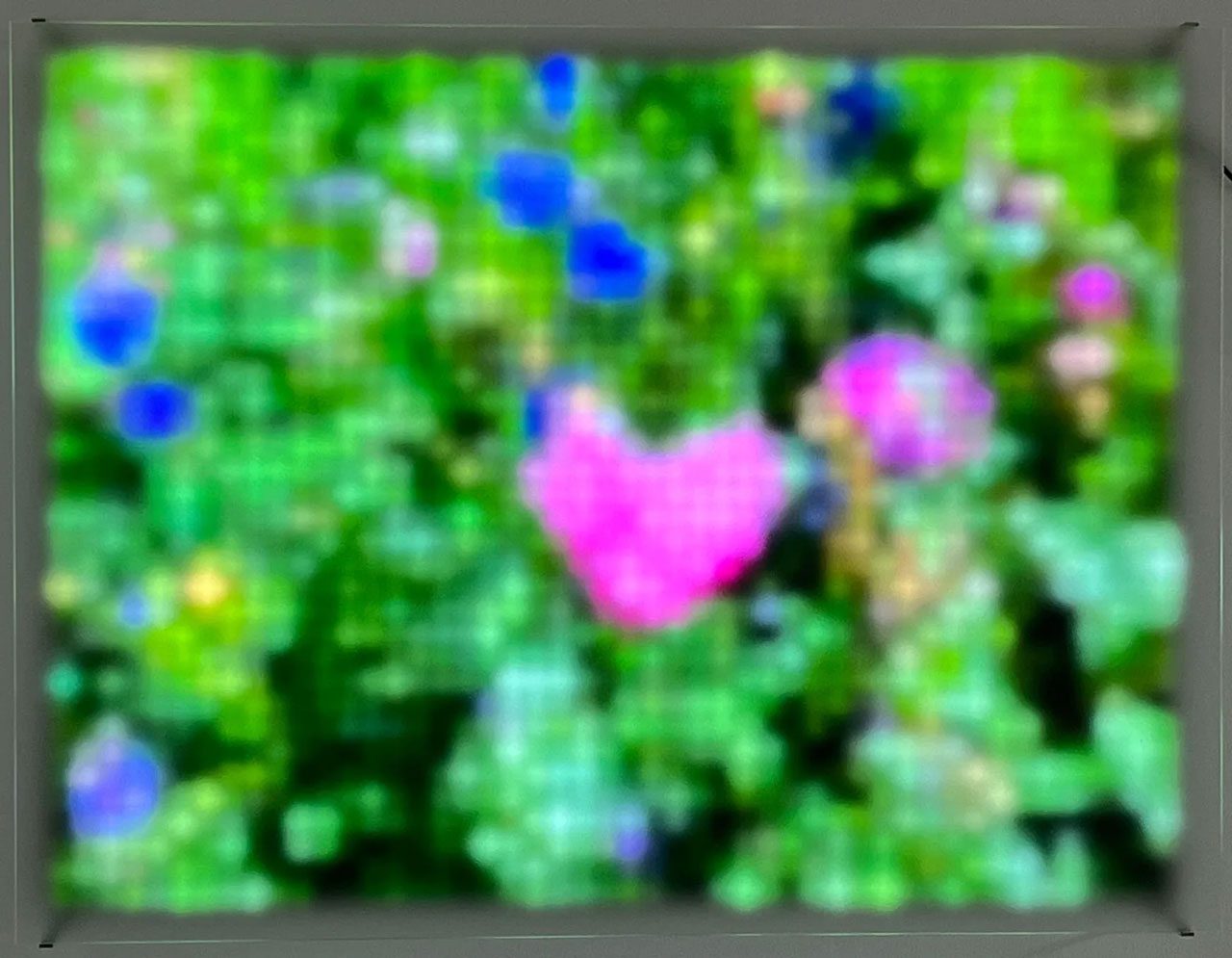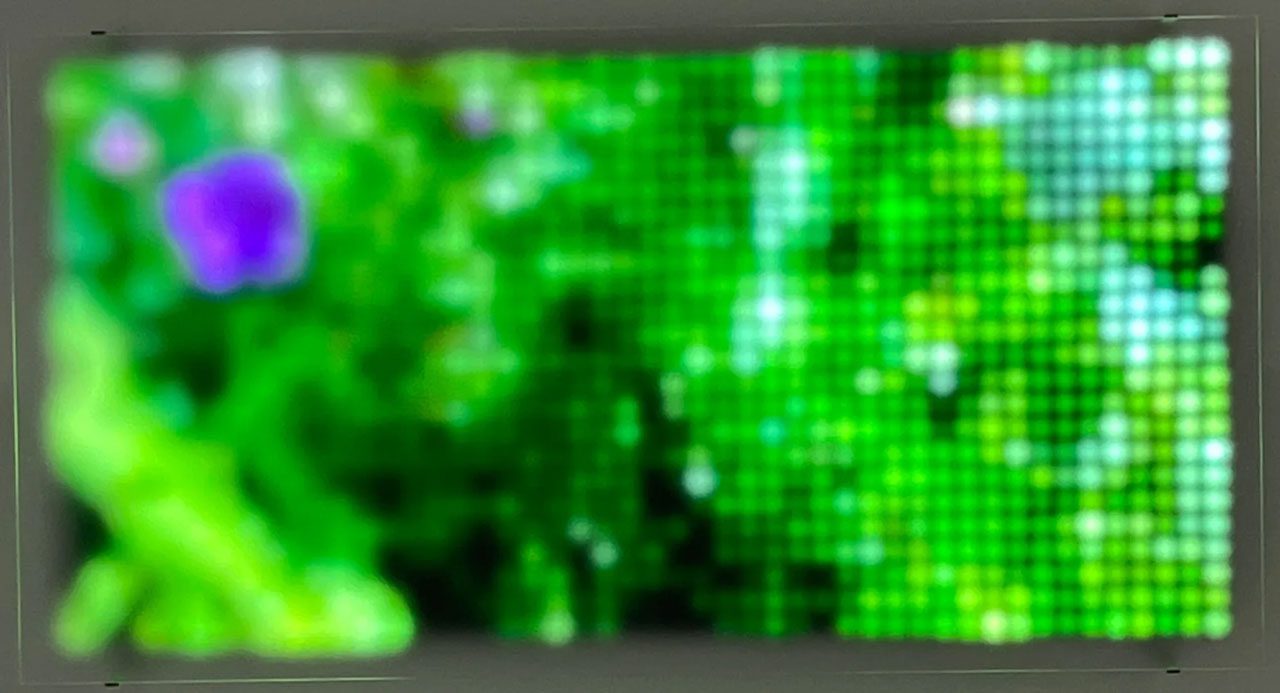PRESENTATION: Jim Campbell & Marco Maggi-Almost Indecipherable
 In two solo exhibitions and one collaborative work, two artists with very different practices the Uruguayan post-minimalist Marco Maggi and Bay Area tech pioneer Jim Campbell, explore perception and how a viewer’s perspective informs their interpretation of an artwork or experience. One artist’s primary tools are paper, an X-ACTO knife and graphite, while the other works with circuit boards and LEDs. For both, however, time is a principal component.
In two solo exhibitions and one collaborative work, two artists with very different practices the Uruguayan post-minimalist Marco Maggi and Bay Area tech pioneer Jim Campbell, explore perception and how a viewer’s perspective informs their interpretation of an artwork or experience. One artist’s primary tools are paper, an X-ACTO knife and graphite, while the other works with circuit boards and LEDs. For both, however, time is a principal component.
By Efi Michalarou
Photo: Hosfelt Gallery Archive
Jim Campbell was born in Chicago in 1956 and moved to San Francisco after earning degrees in Mathematics and Engineering from MIT. He transitioned from filmmaking to interactive video installations in the mid1980s, and began using LEDs as a primary medium in 2000. His custom electronic sculptures and installations have made him a leading figure in the use of computer technology as an art form. Campbell’s work is unique in that his media and message are inseparable. He uses technologies developed for information transfer and storage to explore human perception and memory. Campbell’s work typically involves pixilated representations created with grids of LEDs, which have such low perceived resolution as to defy comprehension. Exploring the line between representation and abstraction, Campbell plumbs the human ability to interpret information and “fill in the gaps” necessary to create a complete idea. His exploration of the distinction between the analogue world and its digital representation metaphorically parallels the difference between poetic understanding or “knowledge” versus the mathematics of “data.” Marco Maggi’s intricate drawings demand time – time to make, and time to see. Working with modest materials like graphite, X-acto knives, Claybord, Plexiglas, office paper, or aluminum foil, he cuts, draws or etches tiny, abstract lines that incite interpretation but artfully elude it. His works have been compared to microchips, maps, hieroglyphics, or genetic codes. Their diminutive scale requires close-up inspection and time for the eye to adjust to their meticulous details. Maggi combines his various two and three-dimensional drawings into large-scale installations that one navigates like a treasure hunt. Works are installed at unusual angles, heights, and locations, so that each feels like a discovery. Some pieces, such as those with incisions on paper or Plexiglas, are virtually absent – only visible by the shadows they cast. Maggi likens his linear lexicon to an indecipherable language or abstract alphabet. While the drawings themselves evade meaning, their witty, punning titles reveal layers of references, from the framing of news coverage to the latest scientific discoveries. Executed on a scale that, to really see, requires time and minimizes distance, Maggi’s work functions as an antidote to the excess of information transmitted through ever more intricate and rapid networks of media and telecommunications. Since his presentation in the Uruguayan pavilion at the 2015 Venice Biennale, his vocabulary has also included the tiniest hand-cut paper shapes that cluster, fold, curl and stack, encrusting both framed artworks and the walls of the gallery. If Campbell’s strategy is to give you too little information to comprehend what you’re seeing, Maggi’s is to give you too much. Though Maggi’s dense mark–making suggests hieroglyphs, satellite images or nanotechnologies, their specific meaning is ambiguous, even bewildering. You’re compelled to move in close, spend time trying to make sense of what you’re seeing, and decipher it. Conversely, in the case of Campbell’s LED works, the nearer you are, the less comprehensible they become. It’s only by stepping away and watching at length, that you get the perspective you need to form meaning. With both artists’ works the viewers, are compelled to physically act out a metaphor for achieving understanding. You must alter your perspective to see things from another point of view to find deeper significance in your experience.
Photo: Marco Maggi, ECONOMY OF ATTENTION (blue), 2024, cut paper on Dibond, 12 x 12 in, 30.5 x 30.5 cm, © Marco Maggi, Courtesy the artist and Hosfelt Gallery
Info: Hosfelt Gallery, 260 Utah Street, San Francisco, CA, USA, Duration: 7/9-12/10/2024, Days & Hours: Tue-Wed & Fri-Sat 10:00-17:30, Thu 11:00-19:00, https://hosfeltgallery.com/








